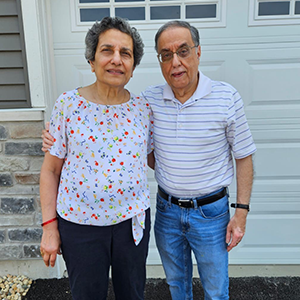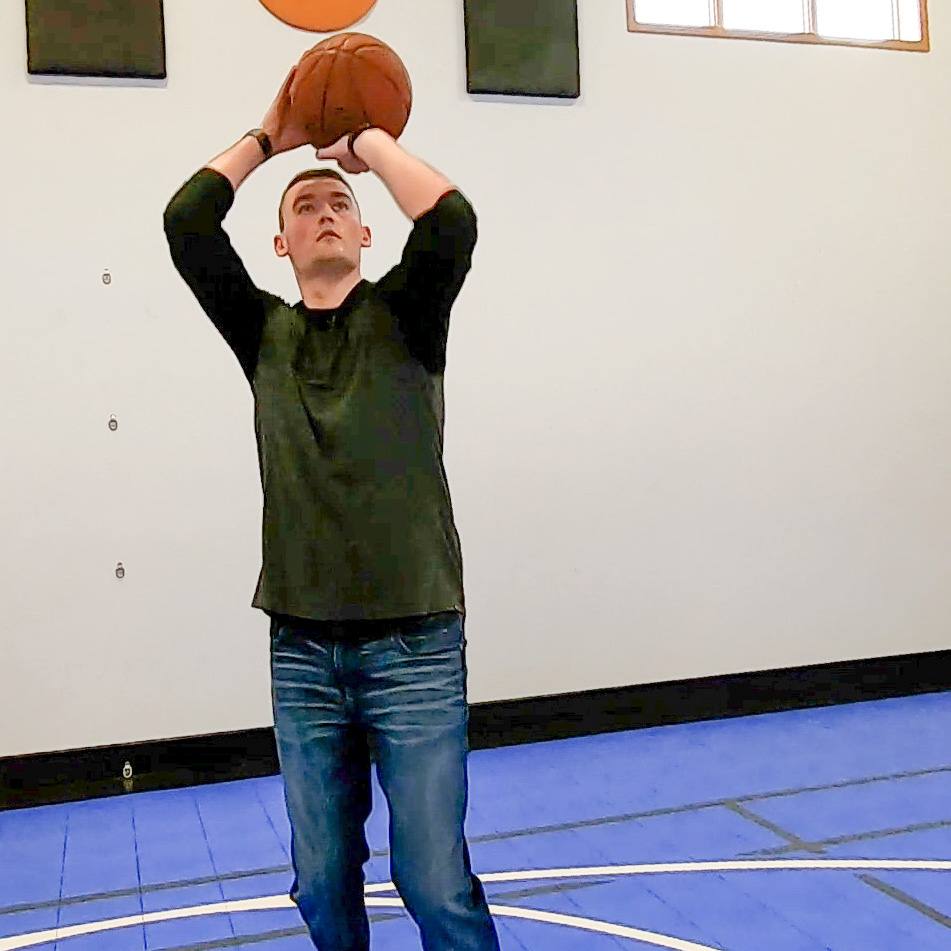Keith Bruno's family history of aneurysms prompted his primary care physician to order a CT scan during a routine physical. That test and the surgery that followed it saved Keith's life.
Keith Bruno knows all too well the devastating effects an undiagnosed brain aneurysm can have. Keith experienced the pain of losing a loved one when one of his family members died from a massive stroke caused by a brain aneurysm.
Keith might have suffered the same fate if his primary care doctor, Richard Engle, M.D., at Mayo Clinic's Arizona campus, had not recommended that Keith have a CT scan during an annual physical in January. The results of that test proved to be life-changing.
Startling discovery
A few hours after the CT scan, Dr. Engle called Keith to share the unfortunate news that the imaging had uncovered a brain aneurysm. The next step would be another test, a cerebral angiogram, that would gather more information about Keith's condition and help guide his treatment. Those results revealed another ominous finding. Keith, who just turned 60, didn't have just one brain aneurysm but two — with one aneurysm growing on top of the other.
Not only did Keith's family history raise his risk for developing an aneurysm in the first place, it also may have played a role in that unusual shape and in the increased danger the aneurysm posed, according to Bernard Bendok, M.D., chair of Neurosurgery at Mayo Clinic's Arizona campus.
"Family history makes it more likely an aneurysm will be irregular in appearance, including an aneurysm growing on top of an aneurysm," says Dr. Bendok. "Their risk for rupture is also significantly higher. Mr. Bruno's risk of rupture was double or quadruple that of someone with no family history."
"Fifty percent of patients with a ruptured aneurysm won't make it to the hospital. That's why it's so important to see a neurosurgeon that has training in all the techniques to treat an aneurysm."
Bernard Bendok, M.D.
When a brain aneurysm ruptures, it causes bleeding in the brain that quickly can become life-threatening. With that in mind, Dr. Engle knew Keith needed specialty care.
"I talked with Dr. Engle, who's been my doctor for 10 years, about some of the surgical options," Keith says. "Then he referred me to Dr. Bendok."
Keith, who lives in Phoenix, met with Dr. Bendok and Pelagia Kouloumberis, M.D., another Mayo Clinic neurosurgeon. They were concerned about the risk of rupture and advised Keith, who is used to being physically active and exercising four times a week, to decrease his activity.
"They didn't want me to exert myself at all," he says.
Successful surgery
Dr. Bendok and Dr. Kouloumberis discussed with Keith the treatment options available to him. Those options included three procedures: microsurgery with clipping, endovascular coiling and flow diversion.
"Fifty percent of patients with a ruptured aneurysm won't make it to the hospital. That's why it's so important to see a neurosurgeon that has training in all the techniques to treat an aneurysm," Dr. Bendok says. "We holographically and physically simulate the disease and the procedure before a patient arrives for their first consult. Our goal is to help them make the best informed decision and for the team to deliver the safest possible operation."
After careful evaluation, the doctors recommended a titanium clip for Keith. "We created a 3D print of the aneurysm and tested all three treatments," Dr. Bendok says. "Because of its location and its wide neck, we felt clipping would be the safest and most durable option."
"I'm most grateful that my aneurysm was found, and I'm still alive."
Keith Bruno
Dr. Bendok and Dr. Kouloumberis performed Keith's surgery on May 14. All went well. Afterward, Keith spent two days in the hospital and six weeks at home recovering. He recently returned to work as an electrical field inspector for the state of Arizona.
"Everybody was happy to see me," Keith says. "Being at my job reaffirms that I'm healthy again."
Keith traces his path to renewed health back to that routine physical with Dr. Engle. So when his wife found a card emblazoned with the infinity symbol that said "endless thanks" on it, they knew it was just the right message to convey their appreciation. Keith sent the card as a token of gratitude to Dr. Engle for ordering the tests that ultimately saved his life.
"I'm most grateful that my aneurysm was found, and I'm still alive," Keith says. "I was so fortunate to have had this diagnosed before it ruptured and can live a normal life."
HELPFUL LINKS
- Learn more about brain aneurysms.
- Read about the Department of Neurosurgery.
- Talk with others dealing with aneurysms on Mayo Clinic Connect.
- Explore Mayo Clinic's Arizona campus.
- Request an appointment.
Related Articles








